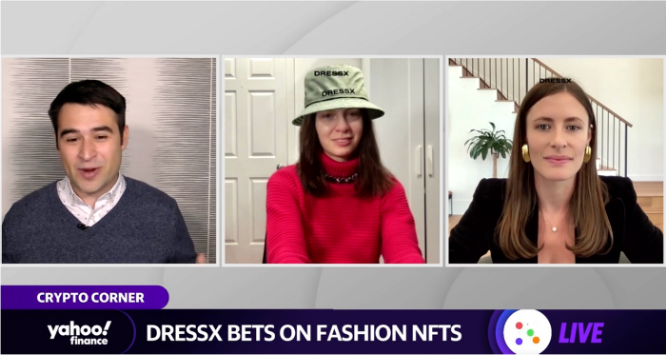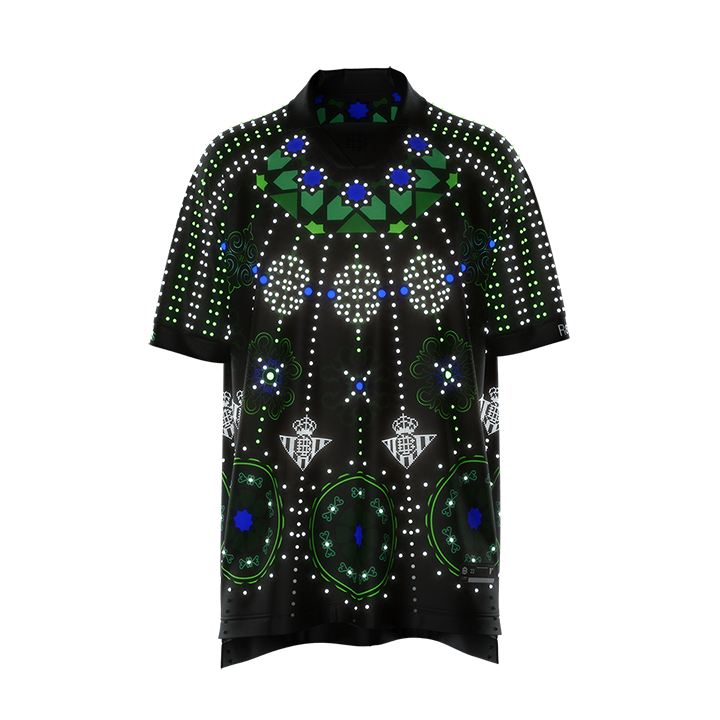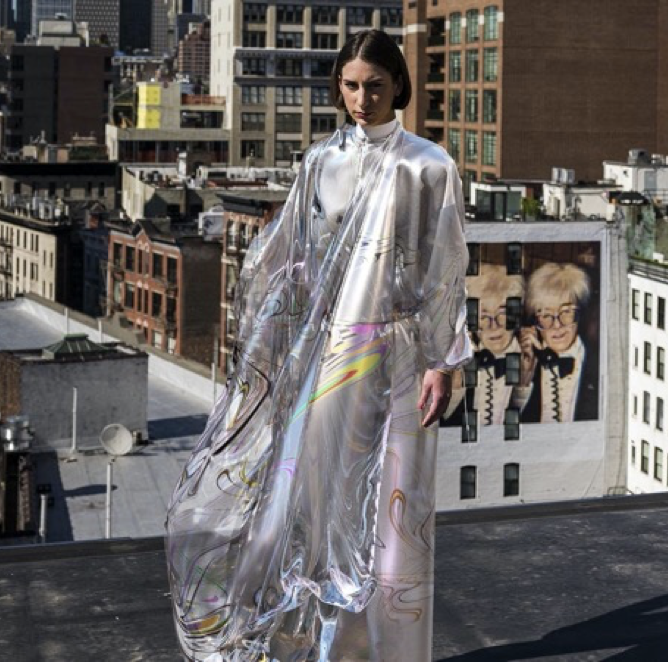Fashion in the Metaverse
by Jascha Samadi, August 08, 2022
Last year we started spending more and more time at the intersection of fashion and Web3 and have led notable deals like The Fabricant’s $14m Series A.
Digital fashion is a fascinating rabbit hole in itself and presents us with a paradigm shift in the way we will perceive and think about what we consider fashion. We are already spending a significant portion of our daily lives within digital environments, e.g. on social media, in zoom calls, or playing games — if we look at the reasons why we dress the way we dress, it is clear that fashion is not something that is going to limit itself to the physical realm but will extend beyond and into virtual environments as well.
In this post, we want to outline some of the reasons why we are so excited about what is happening at the intersection of fashion and crypto. We will share our current thinking on how
- digital fashion will deliver on the ownership of identity — one of Web3’s central promises
- the main functions of clothing will be expanded to the digital realm
- consumer behavior will look much different from physical fashion
- the characteristics of Web3 can change the fashion ecosystem for the better.
This is part 1 of our Digital Fashion mini-series. Read part 2 about “Digital Fashion Interoperability” here.
Let’s elaborate.
300 years ago, before the industrial revolution, there was no such thing as fashion. To the broader masses, clothes were almost only a pure utility. Fashion, as we know it today, was something that was only affordable and accessible to the nobles and aristocracy. Production of clothes was mainly only for domestic use and practicality was the main driver.
With the industrial revolution and the invention of the steam machine, mass production started to take place, decreasing production costs, increasing production output, and eventually making fashion alongside many other goods more accessible to larger audiences. Production moved to more extensive facilities and later on eventually to low-cost environments leading to an industry that is driven by repetitive seasons, recurring production cycles, and massive overproduction while optimized towards high output and low cost.
Today, the fashion industry is the second largest polluter in the world just after the oil industry. Every season about 30% of the clothes produced are never sold. Luxury brands are also to blame — burning excess stock, as opposed to selling it at a discount, in order to maintain the brand’s value and sense of exclusivity. The fashion industry is responsible for over 8% of global greenhouse gas emissions, 10% of total global C02 emissions, and 20% of water waste worldwide. To produce one cotton shirt requires 2,700 liters of water, which is the equivalent of 2.5 years of drinking water.
These are mind-boggling stats, but the industry has recognized the issue and in the past 10 years we have seen a growing emphasis on sustainability and the use of technology in production and distribution processes. Today, in many cases the design, production, and manufacturing processes are automated, 3D-based, and driven by data. The fashion industry has been flirting with digital technologies for a long time to make the production of physical clothes more sustainable — but one approach has been overlooked so far: making people wear less.
Enter Digital Fashion
Digital fashion generally describes a 3D representation of clothing. Generally said, we buy clothes for two reasons — Protection: they keep our body warm, and Identity: allow us to express ourselves. But if more and more human-to-human interaction is happening through digital channels and through the lens of an internet-connected camera, why should physical clothing exist to the extent that it does today. If we spend half of our day in zoom meetings or on social media in an environment where people interact with a virtual reflection of someone’s physical self, why should that virtual reflection be fully dressed in physical garments?

Brands have started to recognize the opportunity, which is said to be a $50bn market by 2030, according to Morgan Stanley with the gaming industry already being a great indication of the potential for brands and designers. Much of the value generated in gaming today comes from selling skins and other in-game items. Brands like Balenciaga, Ralph Lauren, and Lacoste have already entered virtual environments like Fortnite, Roblox, or Minecraft offering digital-only collections while Meta recently announced a digital fashion marketplace selling Prada, Balenciaga, and Thom Browne. But also Web3 counterparts like Decentraland have caught the attention of major brands like Tommy Hilfiger or Etro, who hosted shows during Decentraland’s Metaverse Fashion Week, while Dolce & Gabbana sold its inaugural NFT collection “Collezione Genesi” sold for $5.7m on Polygon in September of last year.
Ownership is essential
In order to truly express ourselves and identify with our virtual selves, we need to own our identity and fashion is a big part of it. In this sense, blockchain-enabled and NFT-based digital fashion is much more than just a collectible. Like its physical counterpart, digital fashion has a (virtual) utility — it can be worn within the Metaverse. Virtual environments like The Sandbox or Decentraland allow for their avatars to be dressed with individual outfits, while platforms like The Fabricant also enable overlays as AR filters on videos and photos in social media apps like Snapchat with the underlying garment in both cases being an asset deployed to the blockchain to allow for true digital ownership.
It is still early days, but the design space is huge — there is more creative freedom in digital environments, there are no physical constraints, no gravity, no extensive supply chain, and no manufacturing waste. Like its physical counterpart, digital fashion serves as a means of self-expression, signaling, pure collectible passion and joy.
If we look at consumer behavior and why people care about fashion beyond the physical utility of clothes, many driving aspects equally translate into the virtual realm and don’t limit themselves to the physical world. Two examples.
1. Signaling membership: Men wear a tuxedo to a wedding and a suit to a job interview because it is considered appropriate, while we put on a jersey to a soccer match because we want to express allegiance to our favorite club or player.

2. Signaling status: From the crowns of kings, to badges and medals on military uniforms, to (now questionable) fur coats and diamond-studded wedding rings, rare garments and accessories have always represented a prominent position, whether through achievement or origin.
Following the logic of those two functions of fashion, it has also gained collectible value and even served as an investment opportunity for long — the sneaker industry has seen a huge influx of collectors with analysts projecting a $30bn market by 2030, rare and iconic watches and handbags have established themselves as an alternative asset class for many, while NFT sports collectibles are forecasted to be a $92bn market by 2032
With more and more of our daily human-to-human activities translating beyond physical borders into virtual environments, it only feels natural that these social norms, motivations and needs will expand. beyond the physical realm as well and we will start to see non-physical fashion items equally ticking the box on all those functions as well. Looking at consumer behavior, there are clear indications for that already today when we see people using different PPFs for different social media environments like Tinder, Instagram, Facebook or Linkedin. Also, according to a Barclay Card study, nearly 10% of all UK shoppers are buying clothes for the sole purpose of posting styled pictures on social media before returning them — why not buy a virtual item right away if the only purpose of buying the physical item is utility within a virtual environment?
We inherently care about our online presences and accommodate them to different environments or occasions, with different representations of ourselves. Within virtual environments, we will have multiple digital reflections of our physical self — one-fifth of Roblox players update their avatars daily purely for self-expression, as they don’t provide any additional special properties. Hence, there are more than one avatar body per human being in the Metaverse and we are likely changing clothes more than once a day, maybe even every other hour, by going into our virtual wardrobe and picking new stuff at the click of a button before jumping into our next zoom meeting. Thus, the fashion industry has a lot more bodies to dress than in the physical world, yet with zero climate impact.

In physical fashion, traceability and authenticity also remain two of the biggest problems that the industry is dealing with. Blockchains are designed as open and publicly verifiable systems, allowing us to trace each and every asset back to its originator, thus making it a much safer environment for brands to experiment with.
The playing field is vast — it could even present us with a huge paradigm shift in the way we perceive luxury, scarcity, and value — potentially making the industry’s core principles of owning something that others don’t collapse and fashion eventually more accessible. One example is Balenciaga skins, which sold for less than $20 in Fortnite’s in-game store pricing at a fraction of their physical counterparts, while Gucci sold a digital version of the Dionysus bag on Roblox for $6, which then ended up trading for more than $4,000, higher than its physical counterpart.
Composable fabrics and programmable garments
But beyond all of that, digital-only and blockchain-enabled clothing turn fashion into a fully programmable financial asset with new business models emerging. The programmability and composability of Web3 as a whole and crypto assets in specific allows for a new design space and new opportunities for creators, designers, and virtual material producers around permissionless co-creation, royalties, and value distribution. Using ERC-1155 standards, creators can — in contrast to ERC-721 — generate a fragment of an NFT, like textile patterns or textile textures allowing them to build off each other’s work in a permissionless manner, the same way we have seen defi builders stack different components on top of each other.
We are also witnessing the financialization of fashion items with opportunities emerging around borrowing and lending of high-value and high-status items.
Unlike physical fashion, digital fashion also does not wear out, secondary sales activity can be expected to be higher than its physical counterpart, which is in itself alone a $100bn market already. Digital fashion produces 97% less carbon emission, no chemical pollution, and no water consumption, making it even more appealing to gen z audiences, a generation that never experienced a world without the internet.
The Fabricant x World of Women co-creation using The Fabricant Studio.
The youtubization of the fashion industry
The traditional fashion industry is the prototype of a permissioned, highly exclusive, and closed ecosystem. For you to become the next Demna, you need to get into the right schools in a very small number of cities like Paris, Milan, or New York, in order to be able to work for a small number of established fashion houses, to eventually be able to showcase your work at exclusive shows, which are yet again only accessible for a certain and very selective group of people.
Digital and blockchain-enabled fashion presents us with the opportunity to democratize access and disintermediate gatekeepers by allowing anyone to become a fashion designer from anywhere in the world. All you need is internet access, a computer, and software tools like Clo3D or Marvelous Designer without ever having to produce a single physical garment. Major labels could see themselves side-stepped by new and digital-first fashion designers, the same way tv networks were side-stepped by millions of creators on youtube, twitch and other platforms.
The Fabricant is spearheading this evolution allowing users through The Fabricant Studio to create, design, and mint digital-only fashion in the form of wearable NFT assets. Before the internet, physical clothes were sold through physical distribution channels. Through the internet and with the emergence of e-commerce, we started selling physical fashion through digital distribution channels. And now, through crypto and Web3, we are able to sell digital fashion through digital distribution channels, which will obviously have a massive impact on the supply and value chain of the industry.
Conclusion
Currently there is a lot of activity in digital fashion, but it is still early days. The industry still lacks standardization, NFT interoperability — both cross-chain and cross-application — is a huge issue (we will cover this in a separate post) and we have yet to reach mainstream consumer adoption. This will require some change in consumer perception on what we consider being fashion, but the social motivations are clear. Digital fashion has the potential to address the very same social norms and needs as physical fashion. As we start to realize that we spend more and more time in digital environments including zoom and hangout meetings in a post-Covid world, we will start to question the need for physical clothing to the extent it exists today. The way we present ourselves on social media and user behavior in gaming environments are both great indicators of what is to come.
We are extremely excited about how the industry will be shaped over the next decade and would love to hear from you if you are building something in digital fashion.


